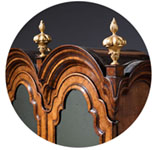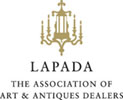A Unique 18th Century Georgian Urn Clock by Paul Rimbault, Soho London, 1770
£34,900
Follow Us
A Unique 18th Century Georgian Urn Clock by Paul Rimbault, Soho London, 1770
A unique and exceptional neoclassical urn clock by Paul Rimbault, London, circa 1770. This singular example of a pendule à cercles tournants stands as a masterpiece of English clockmaking and design from the Georgian period.
The ormolu case is of remarkable quality, with a richly ornamented square plinth base containing the movement, surmounted by an elegant lidded urn with bold scrolled handles terminating in anthemion motifs. Ram’s heads frame either side of the urn and are echoed in the decorative corners of the base. The classical design, inspired by the work of the celebrated architect and designer Robert Adam, is further embellished with finely cast drapery swags, foliate details, and classical medallions. While there is no direct connection between Rimbault and Adam, this clock reflects the influence of Adam’s neoclassical style, which shaped the decorative arts in Britain during the period and inspired clockmakers, bronze casters, and artisans alike. The urn is crowned with an exquisitely cast eagle finial, a further nod to classical symbolism.
The time is displayed through two silvered brass rotating rings set into the body of the urn: the lower ring showing Roman numerals for the hours, the upper ring marked in Arabic numerals for every five minutes, with additional minute divisions. A delicate blued steel pointer indicates the time. The winding holes are cleverly concealed by a sliding shutter adorned with martial motifs, echoed by the ornament on the rear door.
The eight-day double chain fusee movement, mounted between rectangular plates, features an anchor escapement with a short pendulum and stirrup regulation. The strike train chimes the hour and the half-hour on a single bell, with repeat striking on demand via a pull cord. The strike can be silenced through an arbor on the backplate.
This clock is not only a rare survival but a unique piece, combining the finest elements of English craftsmanship, technical ingenuity, and neoclassical design. A true collector’s treasure of museum quality.
Paul Rimbault was a member of a family of clockmakers of Huguenot descent, who excelled in clockmaking. There are some very special clocks known by his hand. He worked from Denmark Street, Soho, from 1770 until his death in 1785. His brother Stephen was also a prolific maker, notably of musical and automaton clocks, with an exceptional example in the Ashmolean Museum in Oxford.
Condition
Good. ear consistent with age and use. Fully restored in perfect working condition for generations to come.
Dimensions
Height: 19.3 in (49 cm)
Width: 4.73 in (12 cm)
Depth: 4.73 in (12 cm)
PREVIOUSLY SOLD
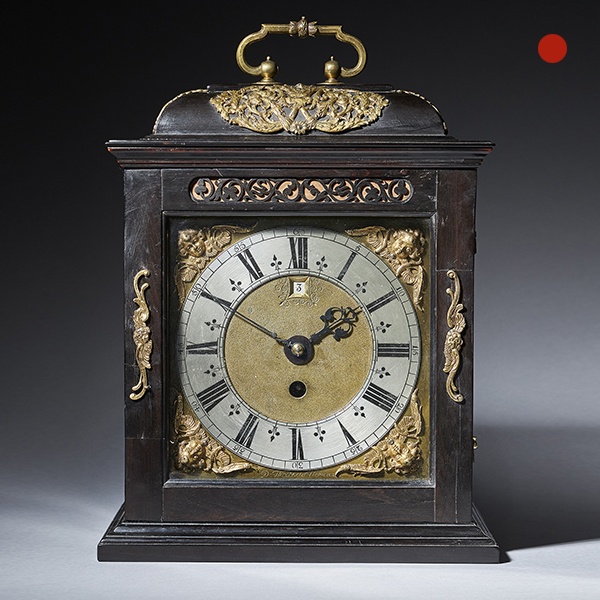
Fine 17th Century Charles II Spring Driven Table Clock by Deodatus Threlkeld
Fine 17th Century Charles II Spring Driven Table Clock by Deodatus Threlkeld SOLD Follow UsFine 17th Century Charles II Spring Driven Table Clock by Deodatus Threlkeld The eminent maker Deodatus Threlkeld (1658-1732) was an apprentice of...
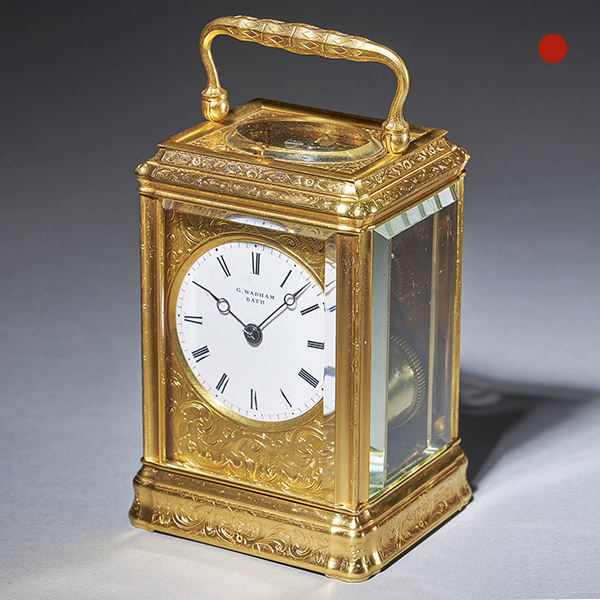
19th Century Gilt-Brass Engraved Striking and Repeating Carriage Clock
19th Century Gilt-Brass Engraved Striking and Repeating Carriage Clock Sold Follow Us19th Century Gilt-Brass Engraved Striking and Repeating Carriage Clock The superb engraved gilt brass gorge case has facetted glass panels to all sides so...
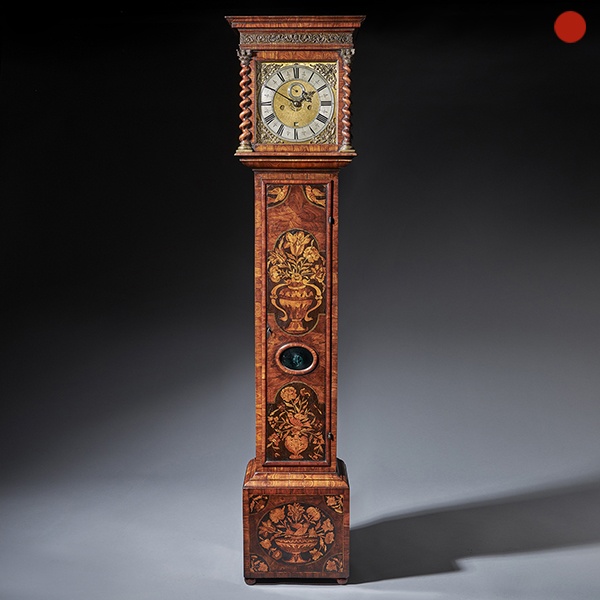
Important Charles II 17th Century Princes Wood and Marquetry Longcase Clock
Important Charles II 17th Century Princes Wood and Marquetry Longcase Clock SOLD Follow UsImportant Charles II 17th Century Princes Wood and Marquetry Longcase Clock A unique and important Charles II 17th century month-going Princes wood and...
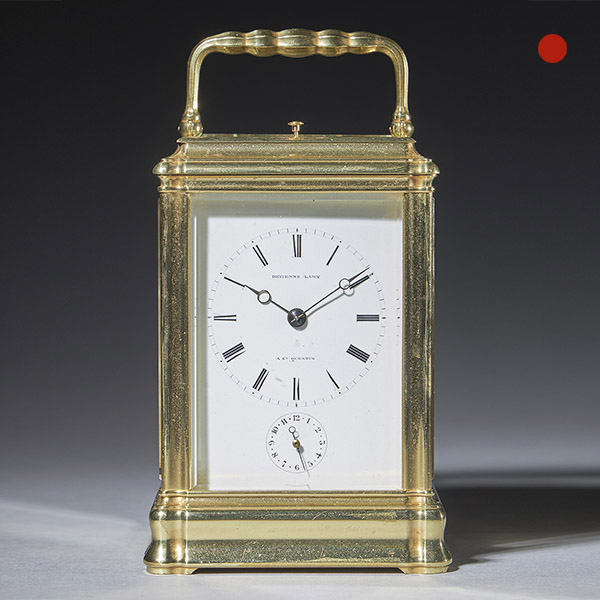
A Rare And Unusual 19th-Century Carriage Clock Signed Devienne Lamy A St Quentin, Circa: 1860
A Rare And Unusual 19th-Century Carriage Clock Signed Devienne Lamy A St Quentin, circa 1860. The gorge case has bevelled glass panels on all sides.
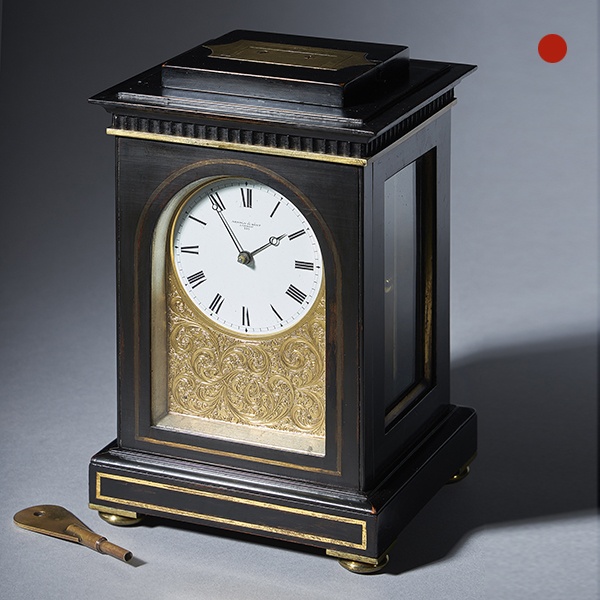
A Unique And Fine Mid 19th-Century Travelling Clock By Celebrated Makers Arnold & Dent, London
Unique and Fine Mid 19th-Century Travelling Clock By Celebrated Makers Arnold & Dent, London. The time is indicated by a fine pair of blued-steel Breguet hands.
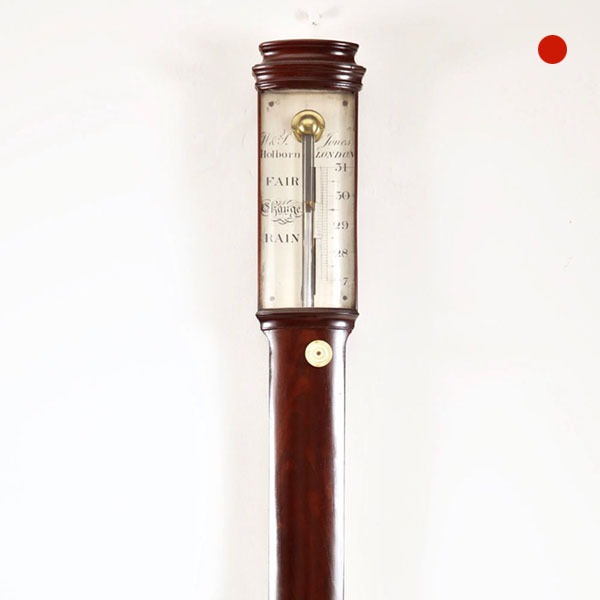
A fine 18th-Century George III mahogany bow-front stick barometer
The mahogany-veneered case has an austere form with only the moulded caddy top and the urn-shaped cistern cover to break its soberness. The silvered register plates are protected by a bowed glass, the recorder with vernier scale being operated by a knob below the register plate.

Fine 17th Century Charles II Spring Driven Table Clock by Deodatus Threlkeld
Fine 17th Century Charles II Spring Driven Table Clock by Deodatus Threlkeld SOLD Follow UsFine 17th Century Charles II Spring Driven Table Clock by Deodatus Threlkeld The eminent maker Deodatus Threlkeld (1658-1732) was an apprentice of...

19th Century Gilt-Brass Engraved Striking and Repeating Carriage Clock
19th Century Gilt-Brass Engraved Striking and Repeating Carriage Clock Sold Follow Us19th Century Gilt-Brass Engraved Striking and Repeating Carriage Clock The superb engraved gilt brass gorge case has facetted glass panels to all sides so...

Important Charles II 17th Century Princes Wood and Marquetry Longcase Clock
Important Charles II 17th Century Princes Wood and Marquetry Longcase Clock SOLD Follow UsImportant Charles II 17th Century Princes Wood and Marquetry Longcase Clock A unique and important Charles II 17th century month-going Princes wood and...

A Rare And Unusual 19th-Century Carriage Clock Signed Devienne Lamy A St Quentin, Circa: 1860
A Rare And Unusual 19th-Century Carriage Clock Signed Devienne Lamy A St Quentin, circa 1860. The gorge case has bevelled glass panels on all sides.

A Unique And Fine Mid 19th-Century Travelling Clock By Celebrated Makers Arnold & Dent, London
Unique and Fine Mid 19th-Century Travelling Clock By Celebrated Makers Arnold & Dent, London. The time is indicated by a fine pair of blued-steel Breguet hands.

A fine 18th-Century George III mahogany bow-front stick barometer
The mahogany-veneered case has an austere form with only the moulded caddy top and the urn-shaped cistern cover to break its soberness. The silvered register plates are protected by a bowed glass, the recorder with vernier scale being operated by a knob below the register plate.
YOU MAY ALSO LIKE
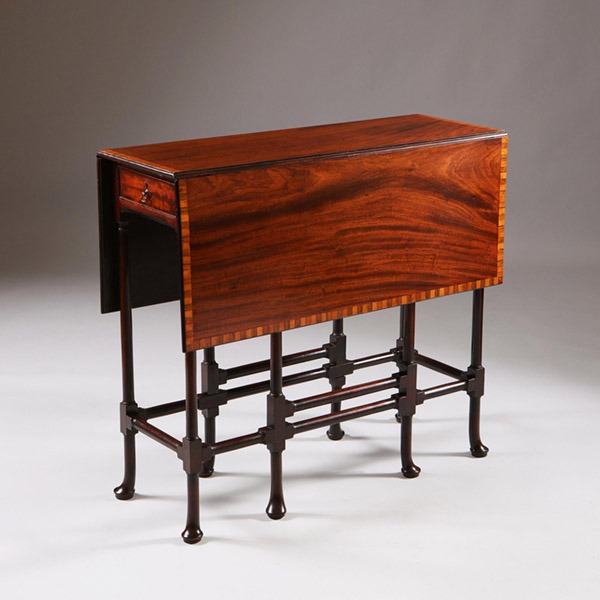
George III mahogany spider-leg table attributed to Thomas Chippendale 1768
A George III mahogany spider-leg table attributed to Thomas Chippendale 1768 £12,000Follow UsA...
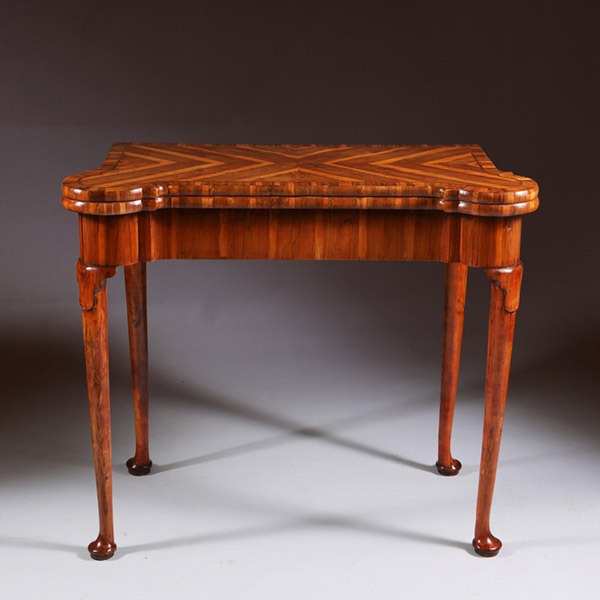
Museum Grade George I Cocus Wood Card Table, Circa 1725, England
Museum Grade George I Cocus Wood Card Table, Circa 1725. England £32,000Follow UsMuseum Grade...
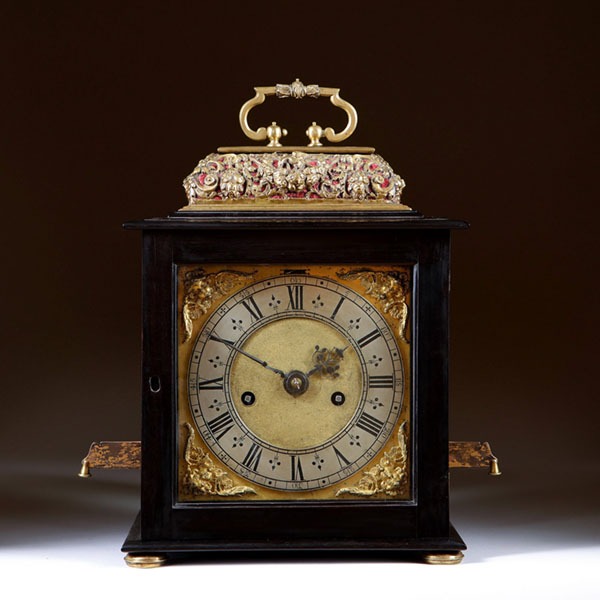
A Rare and Important Charles II 17th Century Table Clock by Henry Jones
A Rare and Important Charles II 17th Century Table Clock by Henry Jones £85,000Follow UsA Rare and...
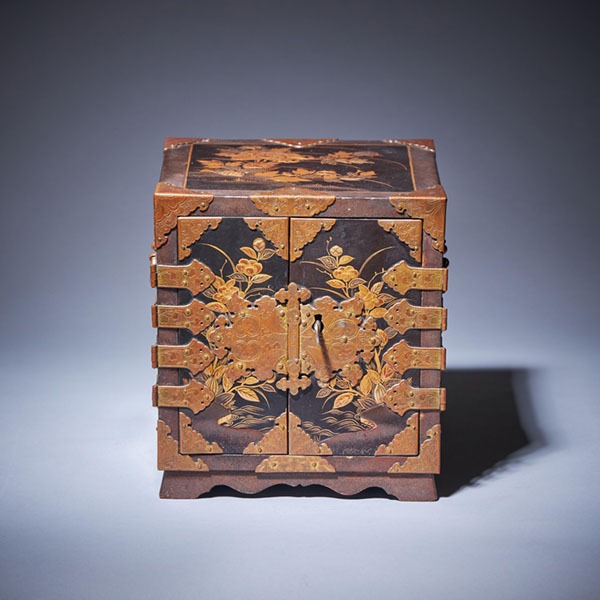
Important Early Edo Period 17th Century Miniature Japanese Lacquer Cabinet
Important Early Edo Period 17th Century Miniature Japanese Lacquer Cabinet £36,000Follow...
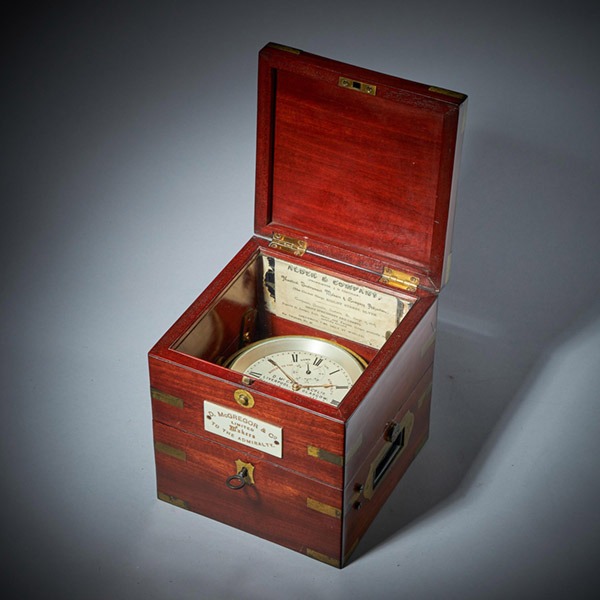
Fine Scottish Two-Day Marine Chronometer Signed and Numbered D. McGregor
Fine Scottish Two-Day Marine Chronometer Signed and Numbered D. McGregor £6,500Follow UsFine...
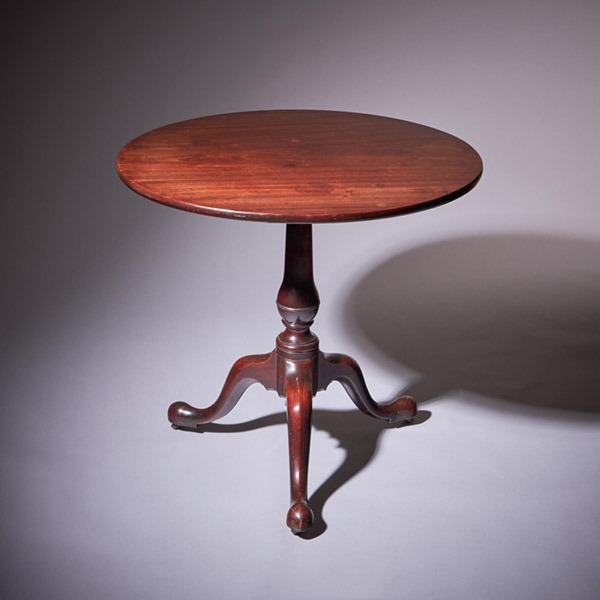
18th Century George III Mahogany Tripod Table, Circa 1770
18th Century George III Mahogany Tripod Table, Circa 1770 £2,200Follow Us18th Century George III...

George III mahogany spider-leg table attributed to Thomas Chippendale 1768
A George III mahogany spider-leg table attributed to Thomas Chippendale 1768 £12,000Follow UsA...

Museum Grade George I Cocus Wood Card Table, Circa 1725, England
Museum Grade George I Cocus Wood Card Table, Circa 1725. England £32,000Follow UsMuseum Grade...

A Rare and Important Charles II 17th Century Table Clock by Henry Jones
A Rare and Important Charles II 17th Century Table Clock by Henry Jones £85,000Follow UsA Rare and...

Important Early Edo Period 17th Century Miniature Japanese Lacquer Cabinet
Important Early Edo Period 17th Century Miniature Japanese Lacquer Cabinet £36,000Follow...

Fine Scottish Two-Day Marine Chronometer Signed and Numbered D. McGregor
Fine Scottish Two-Day Marine Chronometer Signed and Numbered D. McGregor £6,500Follow UsFine...

18th Century George III Mahogany Tripod Table, Circa 1770
18th Century George III Mahogany Tripod Table, Circa 1770 £2,200Follow Us18th Century George III...
